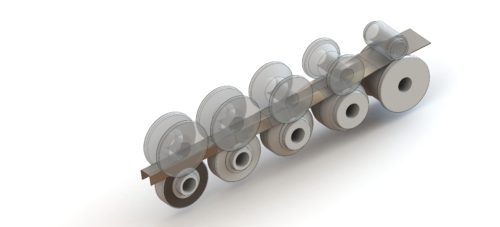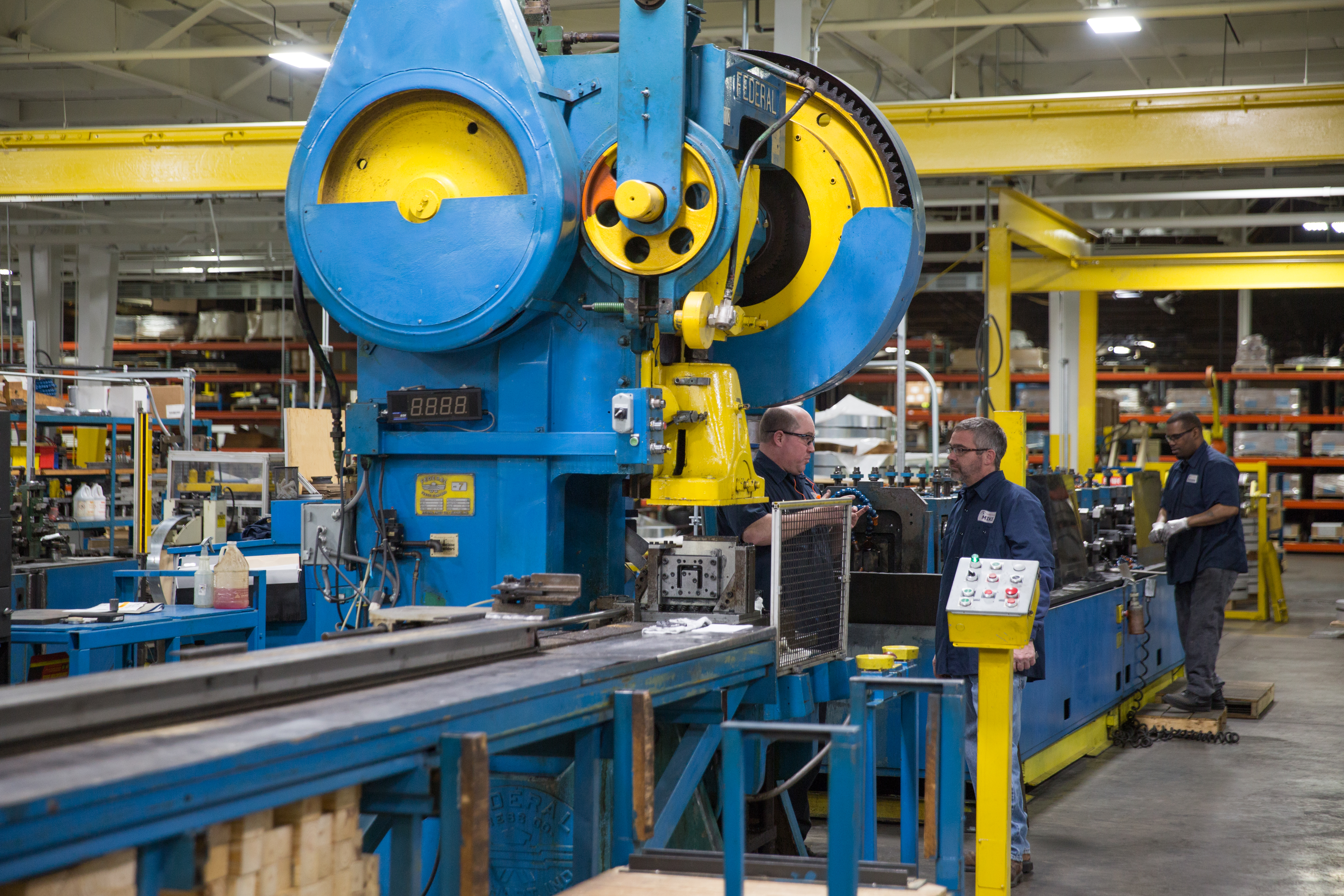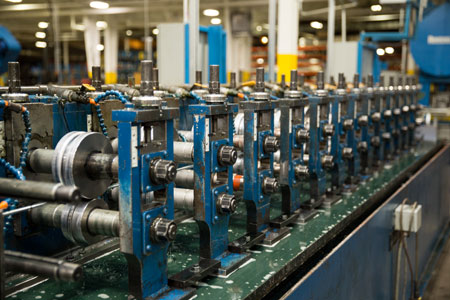Here at Premier Products, we are experts in custom roll forming services. With decades of experience, we have the right skills and the right engineering team to make your products a reality for the lowest cost possible. However, roll forming is a little-understood way of forming metal. This page is designed to give you insight into what roll forming is, what it’s advantages are and how your company can apply this unique forming process to reduce costs.
 The basic process is fairly simple. Coil stock is fed into a roll forming machine which is loaded with a set of tools designed to create a desired continuous cross section.
The basic process is fairly simple. Coil stock is fed into a roll forming machine which is loaded with a set of tools designed to create a desired continuous cross section.
The roll forming machine consists of pairs of roll tools that quickly form the section from flat coil stock to a finished profile, the number of roll pairs depends on the complexity of the section. To the right is an image depicting a simple U-Shaped channel. The top roll tools have been made transparent for better visibility.
Due to the continuous nature of roll forming, the machine can achieve incredibly high speeds creating consistent cross sections in variable lengths. The process is consistent and easy to repeat, lending itself to high tolerances that normal manufacturing methods cannot achieve.
Advantages
- Roll forming can combine processes such as forming, punching, notching, edge treatments and secondary forming into one single operation, massively reducing the number of operations and therefore the overall part costs
- Roll forming can provide superior tolerance controls on the overall cross section than other forming processes
- Roll forming is made for continuous cross section with variable length. Length changes do not require extra tooling and can be done on the fly.
- Since tooling is designed per section, the repeatability of the process from part to part and setup to setup is guaranteed. You will always be able to count on a consistent cross section through the entire life of the tooling.
- Roll forming is a continuous operation that can produce a continuous cross section quickly and efficiently. Since the process never stops, line speeds of 100 ft/min or more can be achieved. This means even very long parts can be quickly produced.
- Roll forming typically uses less material than other methods of forming metal, there is no need for carrier tabs or excessive material between parts.
- Roll forming can create sections that can replace expensive aluminum extrusions, with the right tooling approach and material selection a roll formed section can be superior in both cost and quality.
- Features such as notches, holes, embossed features, date codes and other various elements can be pre-notched into a part before feeding into the roll forming machine. This allows completed parts right off the machine, eliminating the need for secondary processes.
- Parts are typically run with water soluble coolants, eliminating the need for thick oils that leave finished product oily and difficult to use in your final assembly.




